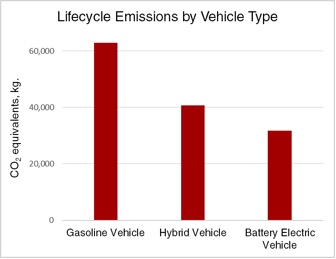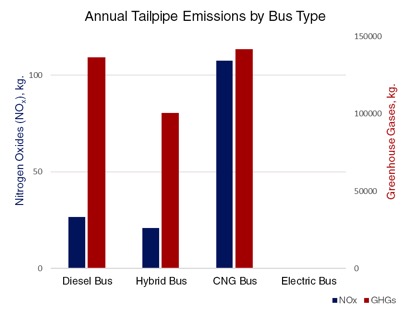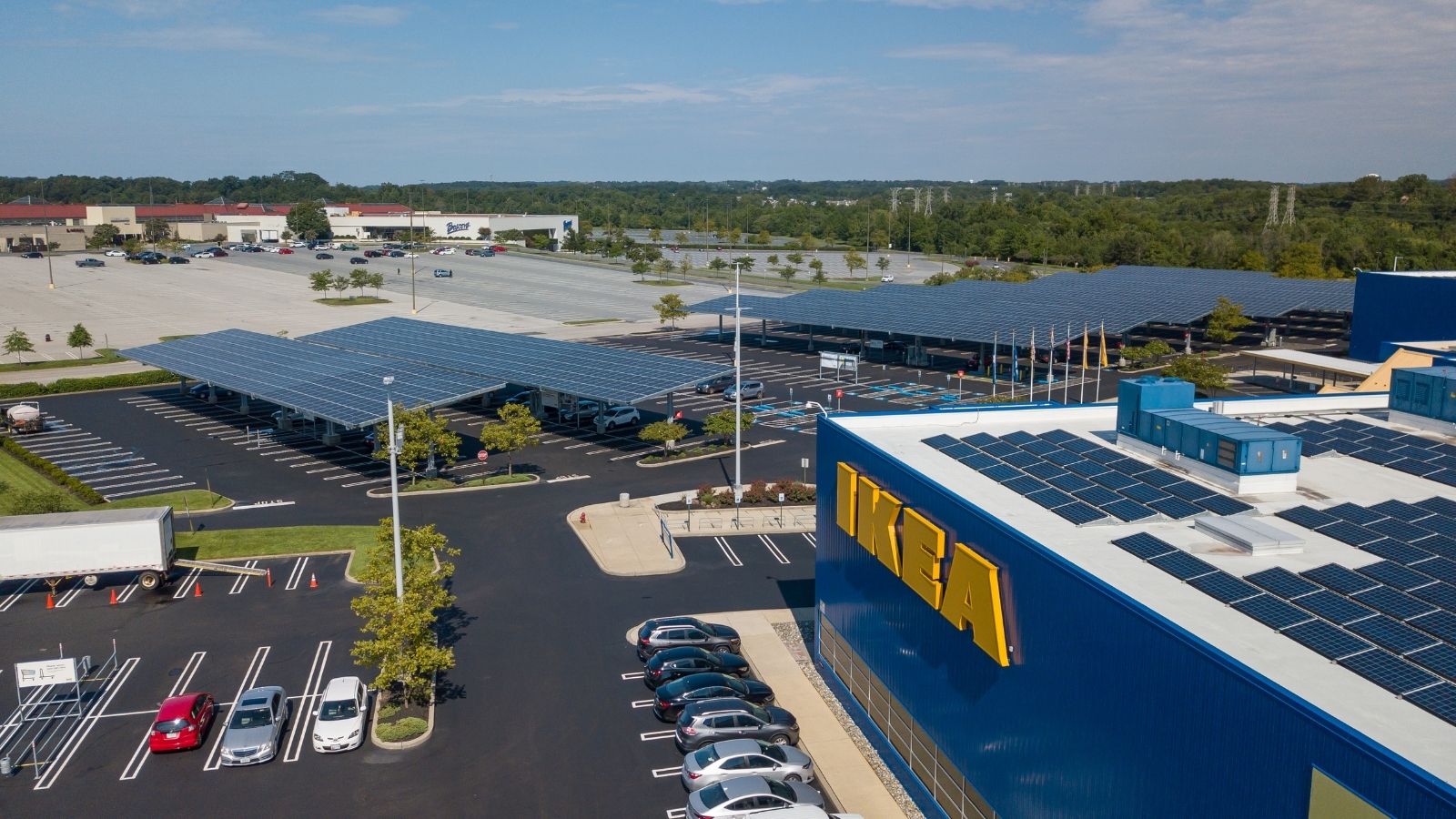How Volkswagen’s Deceit Could Help Accelerate an Electric Revolution
How Volkswagen’s Deceit Could Help Accelerate an Electric Revolution
Connecticut could receive $51.6 million to reduce pollution from transportation.
The payout is part of an agreement reached between the U.S. Department of Justice and Volkswagen after the carmaker was caught selling more than half a million diesel vehicles in the U.S. that polluted up to 40 times the legal limit of dangerous nitrogen oxides (NOX). The entire settlement is worth up to $14.7 billion and will help compensate consumers and clean up our nation’s transportation system.
Out of the total settlement, $2.7 billion will be distributed to states specifically to reduce NOX pollution, a major component of diesel exhaust. In Connecticut, our share will be about $51.6 million. As part of the settlement, Connecticut will be required to develop a plan for how the money will be used to reduce NOX emissions. NOX poses a serious threat to human health and has been shown to aggravate and even contribute to the development of respiratory illnesses. NOX is also a key component of smog, which has similar respiratory and health impacts and contributes to acid rain. In addition, diesel exhaust, which contains NOX, carbon dioxide (CO2), particulate matter, and other pollutants has been classified as a carcinogen by the World Health Organization since 2012.
Given the unique challenges and opportunities in each state, the settlement leaves a good amount of flexibility in how the money may be used. That flexibility though presents its own challenges, opening up the possibility of squandering the money on older, dirtier technology like diesel and natural gas, while forgoing all-electric alternatives. Such a move would represent a massive missed opportunity to transition to a cleaner, healthier, and modern, all-electric system while only realizing marginal pollution reduction benefits.
Make no mistake, pollution from transportation is a major problem. MIT estimates that each year, more than 50,000 people die prematurely from air pollution linked to transportation sources, more than the number of people that die each year from guns or in car collisions. And recently, transportation has become the largest domestic source of global warming emissions, surpassing power generation which often receives far more attention. In fact, in Connecticut, transportation accounts for 42 percent of total carbon dioxide emissions.
Transitioning to all-electric alternatives can reduce long-term costs, gas consumption and harmful pollution while bringing our outdated transportation system into the 21st century. Therefore, it is essential that these funds be invested wisely.
This week, ConnPIRG released a white paper detailing how the money can best be used. After careful analysis, we recommend that Connecticut spend the maximum allowable amount (15 percent) on fast charging electric stations across the state and the remaining funds on new, all-electric transit buses. With the $51.6 million that Connecticut will receive, the state can provide between 77 and 154 fast charging stations covering the entire state highway system, and up to 54 all-electric buses.
Why Charging Stations?
Volkswagen sold hundreds of thousands of polluting vehicles, so getting cleaner vehicles on the road is important to make up for the harm that VW has already caused. All-electric vehicles are as clean as they come with zero tailpipe emissions and far lower lifecycle emissions. Compared to a traditional gasoline car, emissions from electric vehicles are about 50 percent less over their lifecycle.

Unfortunately, one of the biggest obstacles to greater electric vehicle adoption is “range anxiety” or the fear that one will run out of juice while driving. To overcome range anxiety, more electric charging stations are required. A study from Cornell University showed that increasing the number of charging stations can speed electric vehicle adoption at near a one to one ratio; a 10 percent increase in electric charging stations would increase electric vehicle sales by 10.8 percent. Spending 15 percent of the funds on electric charging stations would buy between 77 and 154 fast charging stations, a significant improvement to Connecticut’s current network of about 30 fast charging stations. With these additional charging stations, it’s possible to cover the state’ entire highway system with a fast charging station every 50 miles or less.
In addition to the health, wellness, and environmental benefits, more electric vehicles is also good news for consumers: electric vehicles are significant money savers compared to their gas-powered counterparts. With lower fuel and maintenance costs, thousands of dollars in additional federal and state subsidies, and about half of the pollution of a traditional car, electric vehicles are a smart bet for the state. And with the technology continually improving, initial purchase costs continue to decrease. In fact, since 2010, the global average cost of an electric car battery fell 65 percent.
Why All-Electric Transit Buses
For the remaining $43.9 million, replacing old diesel transit buses with new all-electric buses will offer some of the biggest pollution reductions. Under the terms of the settlement, states may cover 100 percent of the costs of these buses using VW settlement funds.
Moreover, buses are the most heavily used form of public transportation in the nation, responsible for 48.7 percent of unlinked passenger trips – more than any other mode. Given this, electrifying buses in our state is likely to have one of the biggest potential impacts on reducing pollution for thousands of commuters and residents alike.
Yet, the settlement leaves the door open to other alternatives including compressed natural gas (CNG) buses, hybrids, and even newer (but still dirty) diesel buses. While all of these buses will come with some pollution reductions compared to older, diesel buses, the most common type of transit bus, they pale in comparison to the emissions reductions from all-electric buses.
A CNG bus, the dirtiest alternative, produces more than 140 metric tons of greenhouse gas emissions and nearly 110 kilograms of NOX emissions annually. A hybrid bus also produces more than 100 metric tons of greenhouse gas emissions and 20 kilograms of NOX emissions annually. Rather than eliminating tailpipe emissions, putting new CNG, diesel, or hybrid buses on the roads is locking in more pollution for the 10-15 years that bus is operational. In contrast, an all-electric bus produces zero tailpipe emissions and best supports our state’s clean air goals. As Connecticut’s electric grid continues to become cleaner with more renewable energy coming online, electric buses will continue to get cleaner. The same cannot be said about CNG, diesel, or hybrids.

Like electric cars, electric buses are also money savers. According to Proterra, one of the top manufacturers of electric buses, the savings from maintenance alone over the lifetime of an electric bus are more than $135,000. With fewer parts, and no need for oil changes or gas, these buses can be a big help to cash strapped transit agencies.
Many transit agencies are already heading towards electric buses, either already implementing them in regular service or piloting them on select routes. With the clear pollution reductions and cost savings, it’s not hard to see why. But with many transit agencies low on resources, making new capital investments is challenging; this money offers an opportunity to help get cleaner, electric buses on our roads in the near-term.
As the report states, “Connecticut has no way of clawing back the unnecessary and damaging pollution that spewed into its air because of Volkswagen’s defeat devices. Therefore, we need to ensure that any money VW pays in settlements is invested in moving the transportation system toward a cleaner and cheaper future.” Using 15 percent of the funds on expanding electric charging stations and 85 percent on all-electric buses will allow Connecticut to realize that cheaper, cleaner future.
Topics
Authors
Kate Cohen
Find Out More

A look back at what our unique network accomplished in 2023

Campaign for Columbia Sportswear Commitment to Eliminate PFAS Launched Today

Businesses, it’s time to think on top of the box
